Budget-Friendly Minimalist Living Tips for Simple Joys
Category: Lifestyle
Embrace Minimalism Without Breaking the Bank
If you've found yourself overwhelmed by clutter, consumerism, and the constant noise of modern life, you're not alone. Many people are turning to minimalism to regain clarity and joy in their everyday living. But if you’re worried about the costs or complexities involved in adopting a minimalist lifestyle, this guide is exactly what you need. Whether you’re just beginning to explore minimalism or looking for practical ways to simplify on a budget, this post meets you right where you are. We understand that diving into minimalism can feel intimidating—especially with advice that sometimes hints at expensive overhauls or luxury choices. That’s why we focus on budget-friendly, actionable tips that help you simplify your life without spending more or sacrificing what matters. From smart decluttering strategies that save you money to mindset shifts that promote intentional living, this post provides straightforward and accessible steps to rethink your space, time, and resources. Stick around to discover how embracing minimalism practically and affordably can lead to greater fulfillment, clearer priorities, and a lighter, happier lifestyle—no matter your income or starting point.
- Embrace Minimalism Without Breaking the Bank
- Understanding Minimalism: More Than Just Aesthetic Simplicity
- Setting Realistic Expectations: How to Approach Minimalism on a Budget Without Pressure or Perfection
- Decluttering Smartly and Affordably: Practical Techniques for Simplifying Your Space
- Embracing Multipurpose Items: Simplify and Save with Versatile Belongings
- Adopting Mindful Consumption Habits: Strategies to Curb Impulse Buying and Foster Intentional Spending
- Budget-Friendly Home Organization: Simple Tips to Organize Spaces Using Low-Cost or DIY Solutions That Prevent Clutter from Returning
- Reducing Digital and Mental Clutter: Streamline Your Digital Life and Cultivate Mental Clarity Without Extra Cost
- Simplifying Meal Planning and Grocery Shopping: Save Money and Minimize Food Waste
- Prioritizing Experiences Over Things: Enhancing Happiness Through Meaningful Moments
- Building a Community of Support: Finding Like-Minded Individuals to Encourage Your Minimalist Journey
Understanding Minimalism: More Than Just Aesthetic Simplicity
Minimalist living often gets misunderstood as merely an aesthetic choice—clean lines, neutral colors, and bare spaces. While these visuals are part of the appeal, minimalism is fundamentally about intentionality and clarity. At its core, minimalist living means intentionally reducing excess in all areas of life to focus on what truly adds value and joy. It’s about stripping away distractions, whether physical clutter, mental noise, or unnecessary commitments, to bring a deeper sense of fulfillment and peace.
Why Minimalism Brings Clarity and Fulfillment
-
Focus on What Matters
Minimalism encourages you to evaluate your possessions, habits, and priorities critically. By consciously choosing what to keep, use, or engage with, you create space for the things that genuinely enrich your life. This deliberate selection fosters mental clarity and reduces decision fatigue. -
Reduce Stress and Overwhelm
Living with less clutter and fewer commitments naturally lowers stress levels. Minimalism helps you simplify your environment and schedule, making daily routines smoother and more manageable—without overwhelming your mind or wallet. -
Enhance Financial Freedom
By embracing minimalism, you shift away from impulsive buying and consumer-driven habits. This mindset promotes smarter spending and saving, which supports a budget-friendly lifestyle and long-term financial well-being. -
Create Meaningful Experiences
When material distractions fade, you have more time and energy to invest in relationships, hobbies, and personal growth. Minimalist living is less about having more things and more about enriching your experiences and connections.
Understanding minimalism as a thoughtful lifestyle choice rather than a trendy look empowers you to pursue simplicity in ways that align with your needs and budget. This clarity-driven approach sets a solid foundation for practical, frugal steps towards a minimalist life that feels both accessible and rewarding.
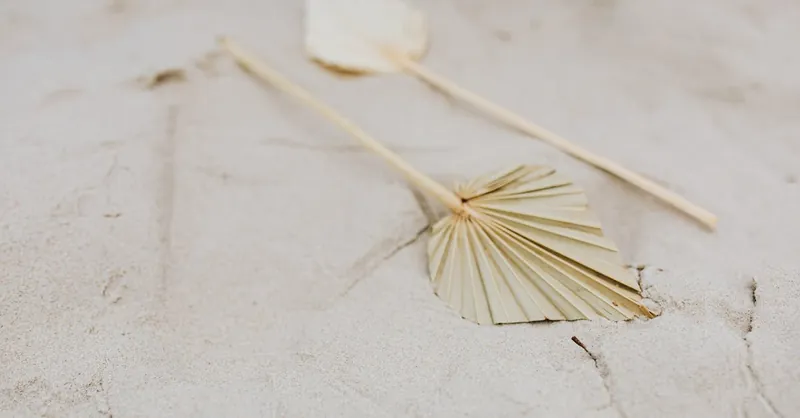
Image courtesy of Photo By: Kaboompics.com
Setting Realistic Expectations: How to Approach Minimalism on a Budget Without Pressure or Perfection
Starting your minimalist journey doesn’t require drastic, expensive changes or an all-or-nothing mindset. Setting realistic expectations is essential to creating a sustainable minimalist lifestyle that fits your budget and unique circumstances. Minimalism is a gradual process of thoughtful downsizing and reevaluation—not a race to perfection or instant transformation. Embrace the idea that small, consistent steps toward simplifying your belongings, habits, and mindset will lead to lasting clarity and peace.
Focus on Progress, Not Perfection
Attempting to overhaul your entire life overnight can create unnecessary pressure and even lead to burnout or frustration. Instead, allow yourself the grace to progress at your own pace. Some helpful approaches include:
- Start Small: Begin decluttering one drawer, corner, or category at a time to avoid feeling overwhelmed.
- Celebrate Wins: Acknowledge and appreciate small improvements, such as clearing unused items or creating a more intentional shopping habit.
- Adjust Expectations: Minimalism looks different for everyone. Your journey should reflect your lifestyle, values, and budget, not a rigid ideal.
Embrace Gradual, Sustainable Change
Sustainable minimalism focuses on changes you can maintain over time rather than quick fixes. This mindset encourages mindful decision-making and helps prevent rebound clutter or overspending. Consider these strategies:
- Implement One New Habit Monthly: Whether it’s a no-spend week, donating unused items, or buying only essentials, each habit builds on the last.
- Prioritize Quality Over Quantity: When purchasing is necessary, choose durable, multi-purpose items that provide long-term value without frequent replacement.
- Use What You Have: Maximize existing possessions before buying new; repurpose, repair, and creatively reorganize to refresh your space on a budget.
By letting go of the need for immediate perfection and high expenses, you create room for minimalism to grow naturally and meaningfully within your means. This balanced approach to minimalist living will reduce stress, promote intentional spending, and help you cultivate a simpler, more fulfilling life—one deliberate step at a time.
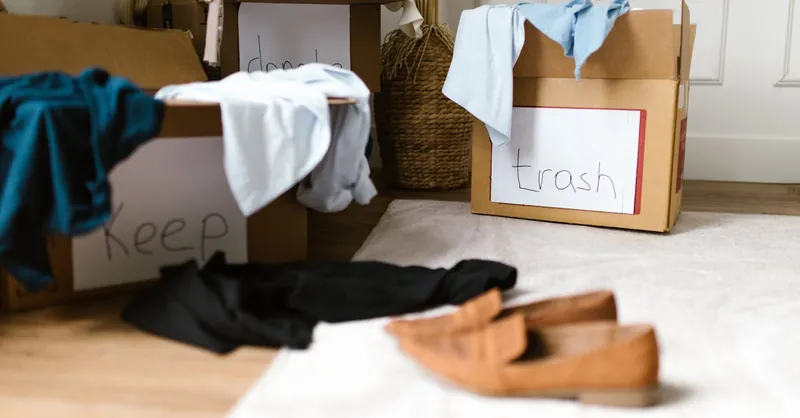
Image courtesy of RDNE Stock project
Decluttering Smartly and Affordably: Practical Techniques for Simplifying Your Space
Decluttering is a cornerstone of minimalist living, but doing it smartly and affordably ensures your journey stays sustainable and stress-free. The key to effective decluttering lies in sorting possessions intentionally, maximizing what you already own, and resisting unnecessary purchases. This approach helps you free up physical and mental space without feeling pressured to replace everything or invest in costly storage solutions.
Practical Steps to Declutter Without Overspending
- Sort by Use and Value
Begin by categorizing your belongings into clear groups: daily essentials, sentimental items, and things you rarely or never use. Ask yourself: - Do I use this regularly?
- Does this item add meaning or utility to my life?
-
Could this be donated, sold, or recycled?
Keeping only what serves a practical or emotional purpose reduces clutter and keeps your space functional. -
Maximize What You Already Have
Before buying anything new, look for ways to repurpose, repair, or reorganize existing items. For example, an old sweater can become a cozy cushion cover; glass jars can serve as storage containers instead of purchasing plastic bins. This mindset respects your budget and reduces waste while enhancing your environment. -
Use Low-Cost Organizing Tools
Instead of splurging on trendy storage or decor, opt for affordable or DIY solutions: - Repurpose shoeboxes for drawer dividers
- Use scarves or belts as creative hooks or holders
-
Declutter with clearly labeled bins made from recycled materials
These budget-friendly options keep your space tidy and support minimalist principles without adding financial strain. -
Avoid Impulse Purchases Post-Declutter
A common challenge after tidying up is feeling the urge to fill empty space. Combat this by committing to a waiting period before buying anything new—at least 30 days. This pause helps evaluate if a new purchase is truly necessary or just filling a temporary void, aligning with the minimalist habit of intentional consumption.
Through these practical yet affordable decluttering strategies, you can transform your living environment into a clear, calm, and functional space. Smart decluttering doesn’t just save money; it cultivates a mindset of gratitude and intentionality that keeps your minimalist lifestyle grounded, manageable, and rewarding.
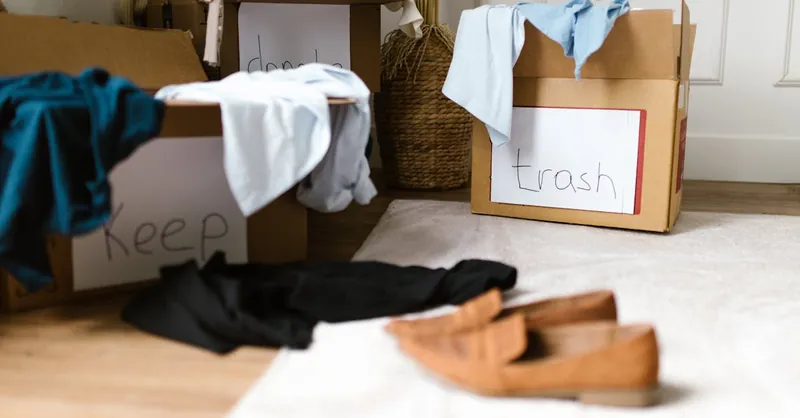
Image courtesy of RDNE Stock project
Embracing Multipurpose Items: Simplify and Save with Versatile Belongings
A cornerstone of budget-friendly minimalist living is investing in multipurpose items that streamline your daily routines and reduce overall spending. Choosing versatile belongings means you buy less, save money, and create a more functional, intentional space. When your possessions serve more than one purpose, you cut down on clutter, reduce decision fatigue, and enhance the efficiency of your living environment.
Why Multipurpose Items Matter in Minimalism
- Reduce Consumption: Owning fewer but multifunctional items discourages impulse buying and repeated purchases, supporting a more sustainable and affordable lifestyle.
- Maximize Space: Multipurpose belongings take up less room, making them ideal for smaller living areas or anyone looking to keep their environment uncluttered.
- Simplify Daily Life: When items can perform various roles, your routines become more straightforward, saving time and mental energy.
How to Identify and Choose Versatile Items
- Look for Dual Functionality: Opt for products that easily adapt to various tasks. For example:
- A sturdy scarf that can be a blanket, wrap, or bag accessory
- Furniture like an ottoman with hidden storage or a fold-out desk
- Kitchen gadgets that handle multiple cooking techniques (e.g., a blender that also acts as a food processor)
- Prioritize Durability and Quality: Multipurpose items should withstand frequent use in different contexts. Investing in well-made, adaptable pieces means fewer replacements and long-term savings.
- Consider Your Lifestyle Needs: Versatility means different things to different people. Reflect on your daily habits to select items that genuinely enhance your routines without adding complexity.
- Repurpose Existing Belongings: Before purchasing new items, identify opportunities to use things you already own in innovative ways—rethink scarves as bags or vintage ladders as shelving.
By embracing multipurpose belongings, you align your possessions with minimalist values of intentionality and functionality. This smart approach helps you reduce overall consumption, simplify your lifestyle, and stay within your budget—making minimalism achievable, practical, and deeply rewarding.
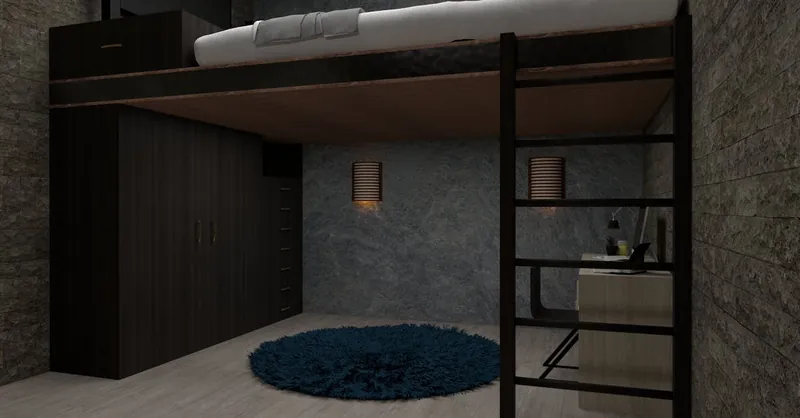
Image courtesy of Pușcaș Adryan
Adopting Mindful Consumption Habits: Strategies to Curb Impulse Buying and Foster Intentional Spending
One of the most transformative shifts in budget-friendly minimalist living is adopting mindful consumption habits. Mindfulness in spending helps you interrupt the cycle of impulse buying and consumerism that often leads to clutter and financial strain. Instead of reacting to marketing triggers or fleeting desires, mindfulness encourages thoughtful evaluation of your purchases by distinguishing between needs and wants. This approach not only reduces unnecessary spending but also ensures that each item you bring into your life serves a clear, meaningful purpose.
How to Cultivate Intentional Spending Behaviors
-
Pause Before Purchasing
Implement a mandatory waiting period—such as 24 to 30 days—before buying non-essential items. This "cooling off" time allows you to assess if the product truly adds value or is just a temporary craving. -
Ask Key Questions
Before making a purchase, consider: - Do I need this item to fulfill a practical function?
- Will it replace or eliminate something I already own?
-
Does it align with my minimalist values and lifestyle goals?
-
Set Clear Priorities and Budgets
Create spending categories aligned with your most important needs, such as essentials, self-care, and occasional treats, and allocate a reasonable budget to prevent overspending. -
Limit Exposure to Advertising and Temptations
Reduce impulse triggers by unsubscribing from marketing emails, avoiding window shopping, and limiting time on social media where ads abound.
Benefits of Mindful Consumption in Minimalism
- Reduced Clutter and Waste: Thoughtful purchases mean fewer items that quickly become obsolete or unused.
- Stronger Financial Health: Intentional spending frees up resources for saving, investing, or experiences that bring real joy.
- Greater Satisfaction and Contentment: Buying less, but better, increases appreciation for what you own, deepening your connection to your possessions.
By embracing mindful consumption, you empower yourself to analyze each buying decision carefully and create a spending pattern that supports both your minimalist lifestyle and financial well-being. This intentional approach is a cornerstone for simplifying life on a budget without sacrificing quality or satisfaction.

Image courtesy of Dany Kurniawan
Budget-Friendly Home Organization: Simple Tips to Organize Spaces Using Low-Cost or DIY Solutions That Prevent Clutter from Returning
An essential part of maintaining a minimalist lifestyle on a budget is embracing budget-friendly home organization techniques that keep your space tidy without costly investments. Effective organization not only enhances the functionality of your home but also creates a calming environment that discourages clutter from creeping back in. Fortunately, you don’t need to purchase expensive storage systems to achieve long-lasting order—DIY methods and low-cost solutions can transform your living areas while aligning with minimalist principles.
Practical Low-Cost and DIY Organization Strategies
- Repurpose Everyday Items for Storage
Look around your home for containers or objects that can be reused creatively: - Glass jars as pantry organizers
- Shoeboxes or old tins as drawer dividers
-
Hanging shoe organizers repurposed for small craft or kitchen supplies
These solutions minimize waste and save money while providing customized storage tailored to your needs. -
Use Clear and Labeled Containers
Utilizing transparent bins or jars with simple labels increases visibility and accessibility. Labeling encourages you to return items to their designated spots, reducing chaos and preventing clutter buildup over time. -
Create Dedicated Zones
Assign specific areas for different categories—clothing, paperwork, hobby materials, etc.—to streamline your daily routines and minimize decision fatigue. Clearly defined zones help ensure items don’t stray into unrelated spaces, which is key to maintaining minimalism. -
Implement Vertical and Hidden Storage
Maximize space using wall hooks, shelves, or under-furniture storage that are affordable and easy to install. Vertical storage frees up floor space and keeps frequently used items within reach, fostering a clutter-free environment. -
Establish Daily and Weekly Habits
Simple routines like spending 10 minutes each day tidying high-traffic areas or weekly checks of your possessions help catch clutter early. These habits are free but incredibly effective for sustaining an organized minimalist home.
By adopting these affordable organizing techniques, you empower yourself to maintain a clutter-free space that supports your minimalist living goals without financial strain. With intentional use of what you already have and a commitment to regular upkeep, your home becomes a clear and calming sanctuary—confirming that simplicity and order are achievable on any budget.
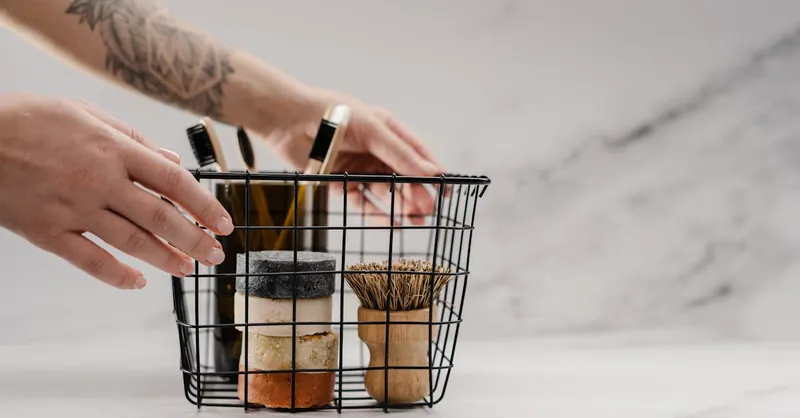
Image courtesy of cottonbro studio
Reducing Digital and Mental Clutter: Streamline Your Digital Life and Cultivate Mental Clarity Without Extra Cost
In today’s hyper-connected world, digital clutter can weigh just as heavily on your mind and space as physical mess. Simplifying your digital environment is a crucial, budget-friendly step in embracing minimalist living. By decluttering your devices, organizing your digital files, and managing screen time intentionally, you foster mental clarity and reduce overwhelm without spending a dime. Complementing this, adopting mindful mental practices helps cultivate focus and calm, creating space for what truly matters.
Practical Methods to Streamline Your Digital Life
-
Unsubscribe and Unfollow
Regularly audit your email subscriptions, social media follows, and app notifications. Unsubscribing from unnecessary newsletters and unfollowing accounts that don’t add value significantly reduces digital noise and distraction. -
Organize Digital Files Efficiently
Create simple, well-labeled folders and delete unused files, duplicates, or outdated documents. Use free cloud storage options like Google Drive or Dropbox to avoid device clutter and keep important items accessible. -
Limit Multitasking and Screen Time
Set specific time blocks for checking emails and social media instead of constant monitoring. Use built-in screen time tracking tools on your phone or computer to stay aware of usage patterns and consciously reduce time spent on non-essential apps. -
Use Minimalist Apps and Tools
Replace feature-heavy apps with simpler, free alternatives designed for productivity and focus, such as note-taking apps with clean interfaces or task managers that prevent overwhelm.
Cultivating Mental Clarity and Focus Without Extra Cost
- Practice Daily Mindfulness or Meditation: Even just 5–10 minutes of guided or silent mindfulness helps clear mental clutter and improve concentration. Numerous free apps and online videos provide easy access without any cost.
- Journaling for Mental Decluttering: Writing down thoughts and to-dos reduces anxiety and organizes your mind. Use simple digital notes or a basic notebook you already own to start a daily journaling habit.
- Establish Intentional Routines: Creating morning or evening routines that include quiet reflection or focused activity builds mental clarity while reinforcing a minimalist mindset.
- Digital Sabbaticals: Designate regular tech-free periods—whether a few hours daily or a full day weekly—to rest your mind, reconnect with your environment, and avoid overstimulation.
By applying these cost-free digital decluttering and mental clarity practices, you not only create a more streamlined, peaceful digital environment but also enhance your overall well-being. Reducing digital distractions and cultivating simple, mindful habits support your minimalist lifestyle goals by fostering focus, reducing stress, and empowering you to live intentionally in every aspect of life.
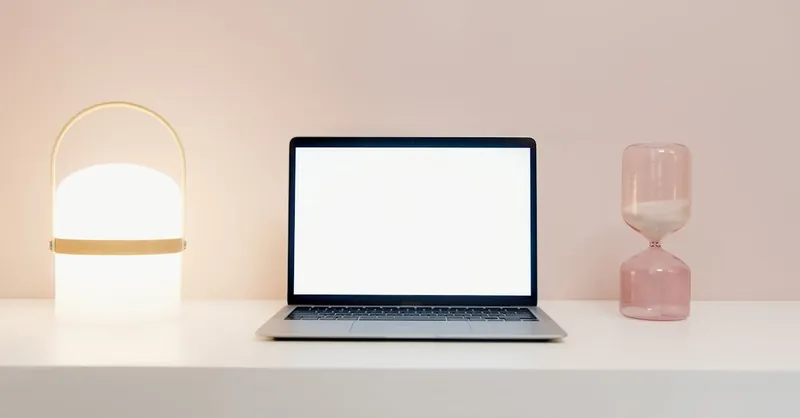
Image courtesy of Artem Podrez
Simplifying Meal Planning and Grocery Shopping: Save Money and Minimize Food Waste
One of the most effective ways to embrace budget-friendly minimalist living is by simplifying meal planning and grocery shopping. Thoughtful planning not only helps you save money but also significantly reduces food waste—an important factor in minimizing clutter in your kitchen and easing mental load. When you approach meals with intentionality, you streamline your routines, limit impulsive purchases, and make better use of the ingredients you already have, all while nourishing your body efficiently.
Strategies for Thoughtful Meal Planning and Smart Grocery Shopping
-
Plan Weekly Meals Around Core Ingredients
Select versatile staples like rice, beans, seasonal vegetables, and proteins that can be used across multiple meals. This reduces the number of items you need to buy and helps you avoid buying specialty ingredients that might go unused. -
Create a Detailed Shopping List Based on Your Meal Plan
Writing a precise shopping list minimizes impulse buys and unnecessary packaging. Stick to the list strictly to avoid accumulating excess food and ingredients that clutter your pantry. -
Buy In Bulk for Non-Perishable Items
Purchasing essentials like grains, nuts, and spices in bulk is often cheaper and cuts down on frequent trips to the store. Use reusable containers to store these items neatly, supporting both minimalism and sustainability. -
Embrace Leftovers and Repurpose Meals
Plan for leftovers by intentionally cooking larger portions and transforming them into different dishes (e.g., roasted vegetables can become a soup or salad topping). This reduces food waste and saves time on busy days. -
Shop Seasonally and Locally
Seasonal produce tends to be more affordable and tastes better, while shopping farmers’ markets or local co-ops often reduces packaging waste. These choices align perfectly with minimalism by emphasizing quality, sustainability, and thoughtful consumption. -
Avoid Shopping When Hungry or Distracted
Physical hunger or distractions often lead to impulse buying. Eat a small meal beforehand and shop with a focused list to maintain control over spending and reduce clutter from unnecessary food items.
By integrating these minimalist meal planning and grocery shopping tips into your routine, you gain greater control over your food budget and create a clutter-free kitchen environment. Thoughtful meal preparation not only saves money and reduces waste but also complements the minimalist lifestyle by promoting intentional living in one of your most frequent daily activities.
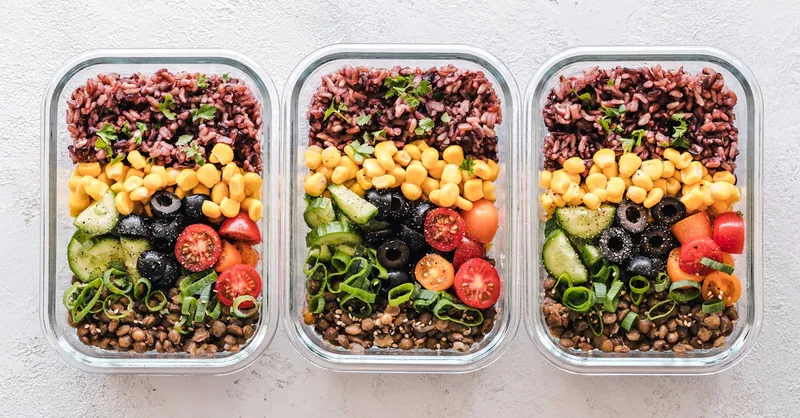
Image courtesy of Ella Olsson
Prioritizing Experiences Over Things: Enhancing Happiness Through Meaningful Moments
A core principle of minimalist living is the shift from accumulating material possessions to investing in meaningful experiences that enrich your life. Studies consistently show that spending money on experiences—such as travel, learning, or time with loved ones—yields longer-lasting happiness than purchasing physical goods. By prioritizing experiences over things, you reduce clutter, save money on non-essential items, and create memories that contribute to your overall well-being and sense of fulfillment.
Why Investing in Experiences Aligns with Minimalism
- Lasting Emotional Value: Experiences shape your identity and foster personal growth, unlike items that often lose their appeal or become obsolete.
- Strengthened Relationships: Shared experiences build deeper connections with family and friends, enhancing your social support network and joy.
- Reduced Physical Clutter: Spending on experiences inherently limits the accumulation of possessions, keeping your living space simpler and more intentional.
- Budget-Friendly Flexibility: Many meaningful experiences, like hiking, community events, or exploring local parks, require little to no financial outlay but offer rich rewards.
Ways to Embrace Experience-Focused Spending on a Budget
- Choose Low-Cost or Free Activities: Look for community workshops, free concerts, nature outings, and library events that provide quality experiences without breaking the bank.
- Prioritize Quality Time Over Quantity: Allocate resources toward occasional meaningful experiences rather than frequent small purchases with fleeting value.
- Gift Experiences Instead of Things: For celebrations, consider giving tickets, classes, or time-based gifts that encourage shared memories rather than physical clutter.
- Document Your Experiences: Create photo journals, blogs, or simple keepsakes that celebrate your moments and strengthen their positive impact on your life.
By shifting your mindset to value experiences over possessions, you cultivate a minimalist lifestyle that is emotionally fulfilling, financially sustainable, and deeply aligned with the principles of intentional living. This approach not only enhances happiness but also supports a clearer, simpler environment that reflects what truly matters.

Image courtesy of PICHA
Building a Community of Support: Finding Like-Minded Individuals to Encourage Your Minimalist Journey
Embarking on a minimalist lifestyle, especially with a focus on budget-friendly practices, can be deeply rewarding—but it is also a journey that benefits immensely from the support of a community. Connecting with like-minded individuals or groups who share your values around simplicity and intentional living not only provides encouragement but also unlocks a wealth of practical, budget-conscious tips and ideas. Building this supportive network helps maintain motivation, fosters accountability, and offers fresh perspectives on overcoming common challenges in minimalism.
How to Find and Cultivate a Supportive Minimalist Community
-
Join Online Minimalism Forums and Social Media Groups
Platforms like Reddit’s r/minimalism, Facebook groups, and Instagram communities are excellent places to share your experiences, exchange affordable minimalist hacks, and gain inspiration. These virtual spaces are accessible at no cost and provide ongoing support from people at various stages of their minimalist journey. -
Attend Local Meetups or Workshops
Look for minimalist or sustainable living meetups in your area, often hosted by community centers, libraries, or eco-conscious organizations. These gatherings facilitate face-to-face connection, where members often swap budget-friendly resources like secondhand sales, DIY ideas, and service exchanges. -
Engage in Swap Events and Clothing Exchanges
Participating in or organizing swapping events enables you to refresh your possessions without spending money. This not only reduces consumption but also builds bonds with others who prioritize mindful, affordable living. -
Collaborate on Shared Resources and Bulk Purchases
Teaming up with your minimalist community can increase buying power for essentials, allowing you to access discounts through bulk purchasing. Sharing tools, appliances, or books further reduces individual expenses and encourages a culture of intentional sharing. -
Seek Accountability Partners or Minimalism Buddies
Pairing up with someone who understands your goals can boost your commitment. Regular check-ins, decluttering sessions, or budgeting challenges with a friend make the minimalist process less isolating and more enjoyable.
The Benefits of Community in Your Minimalist and Budget Journey
- Encouragement During Setbacks: When minimalism feels overwhelming, community support helps you stay resilient and focused.
- Exposure to Diverse Budget Tips: Others’ creative solutions to reduce spending or maximize resources expand your toolkit for affordable living.
- Accountability for Consistency: Sharing your goals increases your likelihood of maintaining minimalist habits.
- Emotional Connection and Shared Purpose: Belonging to a group with aligned values enhances feelings of fulfillment beyond material possessions.
By surrounding yourself with a community that champions simplicity and affordability, you create a nurturing environment that empowers your minimalist lifestyle to flourish sustainably. This network not only keeps you connected and motivated but also enriches your minimalist journey through shared knowledge and collaboration—proving that minimalism thrives best not in isolation, but in supportive, intentional community.

Image courtesy of Viktoria Slowikowska
